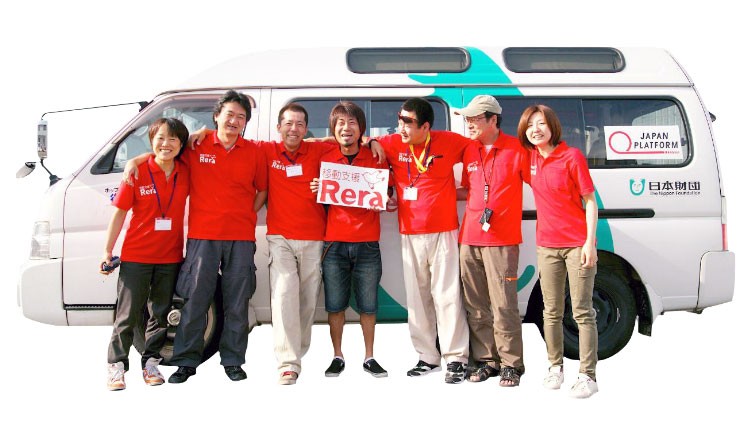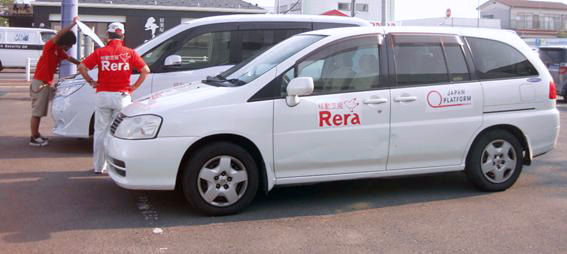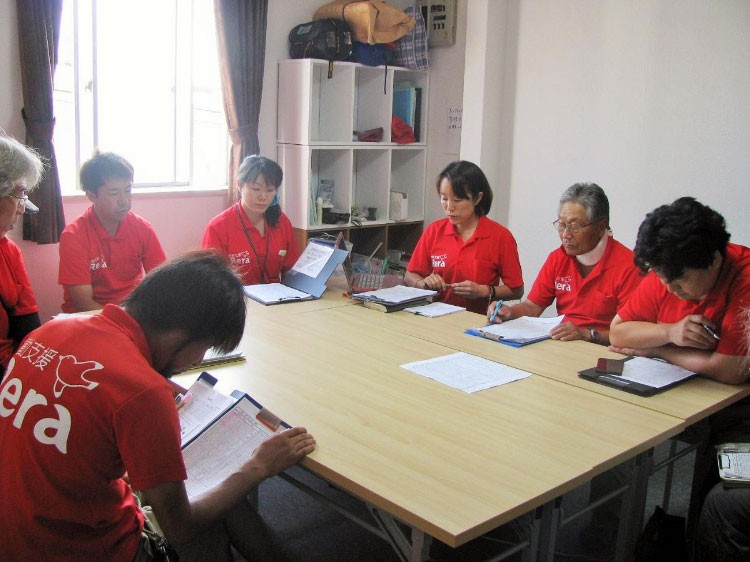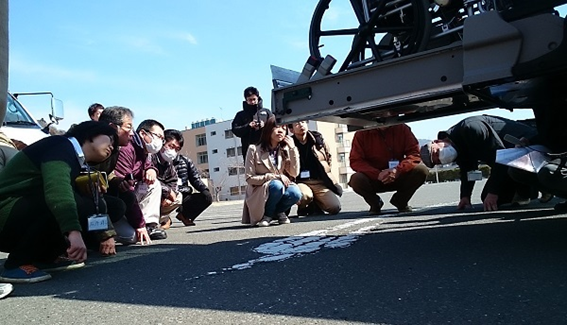Navigating lifelines for the local residents through transportation services Part1 Tohoku Interview: Social Inclusion
Posted on November 07, 2015
by Kris Kosaka
Social inclusion: Empowering the isolated in local communities
A priority of social care within any society is the struggle to include the isolated: the disenfranchised, the disabled, the mentally ill, the elderly or the homeless. In the Tohoku area, over four years since the triple disasters of March 11th, the struggles for those living on the edge of society continues. With so many people within society still needing assistance, from the demands of temporary housing to rebuilding, from compensation issues to the dearth of medical professionals, how are the affected areas ensuring that the voiceless are being heard?
”I’ ve learned there are many ways of volunteering. At first, all I knew was about clearing debris or about supporting the mental care of disaster victims, but now I realize there are many other ways out there to help. Letting people know this is an important task.” Hiroko Murashima, Rera.

Another marginalized group in society are those physically isolated due to age, disability or location. Rera, an Ishinomaki NPO, strives to bring the isolated back into society by providing transportation services at a nominal fee. With the rising elderly population in Japan, reliable and affordable transportation from outlying areas is vital to keep the physically isolated an active part of the wider community. Rera was originally conceived when a Hokkaido-based organization called HOP sent volunteers to Tohoku immediately after the disaster. Back in Sapporo, HOP focuses on supporting disabled people to live independent lives, and Hiroko Murashima was one of the volunteers with HOP in the aftermath of 3/ 11 to come to Ishinomaki. Originally working on a dairy farm, Murashima, like many others, traveled across the nation hoping to aid in the clean-up and disaster relief. Murashima realized in the months that followed that there was a lack of dependable transportation in the affected area. With many of the early volunteers connected to Hokkaido, they took the Ainu word for wind as the organization’s name. Rera has since filled a specific need for the elderly and disabled, a need that exists in many places throughout Japan.

Rera staff conducting safety checks before their morning transport services
There are currently over 1,000 people registered in Rera’s system, and they serve up to 80 people each day. A typical weekday finds ten Rera staff on hand for their 6:30am briefing, discussing such matters as safety or the weather, an update on specific customers or traffic conditions. Most days, seven or eight cars are in use, and Rera actually has a total of ten cars in their fleet, but, according to Murashima: “unfortunately, we can’t meet the needs of all who ask for our help” due to a dearth in staff or volunteers. But it’s a service very much in demand for the aging population:

Every day at Rera starts with a staff briefing at 6:30 am
“When we first started our program,” Murashima continues, “only about half of our services provided transportation to hospital visits. But as living conditions improved, fewer people used our service for things other than hospital visits.” In the months that followed the disaster, many were isolated due to disrupted transportation services and local damage to shops. As more of Ishinomaki was rebuilt, Rera focused on providing services to those who needed aid most, and the essential medical needs of the isolated elderly naturally became their priority. According to Murashima, among their now predominately aged customers, almost all are now focused on “urgent needs to sustain their health: twenty or thirty percent go for dialysis, others go for cancer treatment, eye treatment or other medical things like dental care.” Murashima believes the societal need to support the elderly or disabled “existed before the tragedy, but 3/11 caused the lack of a good support system to be visible and immediate.”
Indeed, over 70% of Rera’s customer’s are the elderly, many women living alone or elderly couples. The average income is only 1.3 million Japanese yen (10,780 US dollars ) a year. Although their philosophy emphasizes inclusion, Rera limits the services to those who most need it, as Murashima believes, “often the weakest members of society are the last to ask for help so I hope we can show those living in the community how to recognize these people and help them out. We’ve started giving workshops on our shuttle service in the community, emphasizing things like safe driving and how to transport people with disabilities, not only in our vehicles, but in their own cars.”
Rera also offers workshops where participants can learn how to safely transport people with disabilities
Writer: Kris Kosaka
Reporter: Kris Kosaka and Yoshiko Ugawa (JNPOC)
Coordinator: Tohru Nishiguchi (JNPOC)
Idoshien Rera is a grantee of the Japan Earthquake Local NPO Support Fund, with its donor the Shinkin Central Bank
Idoushien Rera (Japanese only)
Your comments and feedbacks: Contact Us
Recent Articles
- Towards a society where children want to embrace life
- The Evolution of Philanthropy: Five approaches shaping contemporary practice
- 25 years of community understanding and moms’ hard work: The activities of Kinutama Play Village
- Connecting memories: Courage found at the film screening of parents’ legal battle after the Great East Japan Earthquake Tsunami
- An NPO project I came across while reflecting on teacher shortages after leaving my teaching job
- To unlock philanthropy’s potential for Japan, we need to understand its meaning
